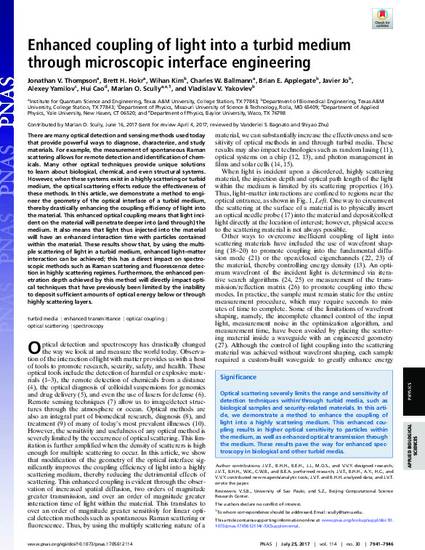
There are many optical detection and sensing methods used today that provide powerful ways to diagnose, characterize, and study materials. For example, the measurement of spontaneous Raman scattering allows for remote detection and identification of chemicals. Many other optical techniques provide unique solutions to learn about biological, chemical, and even structural systems. However, when these systems exist in a highly scattering or turbid medium, the optical scattering effects reduce the effectiveness of these methods. In this article, we demonstrate a method to engineer the geometry of the optical interface of a turbid medium, thereby drastically enhancing the coupling efficiency of light into the material. This enhanced optical coupling means that light incident on the material will penetrate deeper into (and through) the medium. It also means that light thus injected into the material will have an enhanced interaction time with particles contained within the material. These results show that, by using the multiple scattering of light in a turbid medium, enhanced light-matter interaction can be achieved; this has a direct impact on spectroscopic methods such as Raman scattering and fluorescence detection in highly scattering regimes. Furthermore, the enhanced penetration depth achieved by this method will directly impact optical techniques that have previously been limited by the inability to deposit sufficient amounts of optical energy below or through highly scattering layers.
- Enhanced transmittance,
- Optical coupling,
- Optical scattering,
- Spectroscopy,
- Turbid media
Available at: http://works.bepress.com/alexey-yamilov/116/
